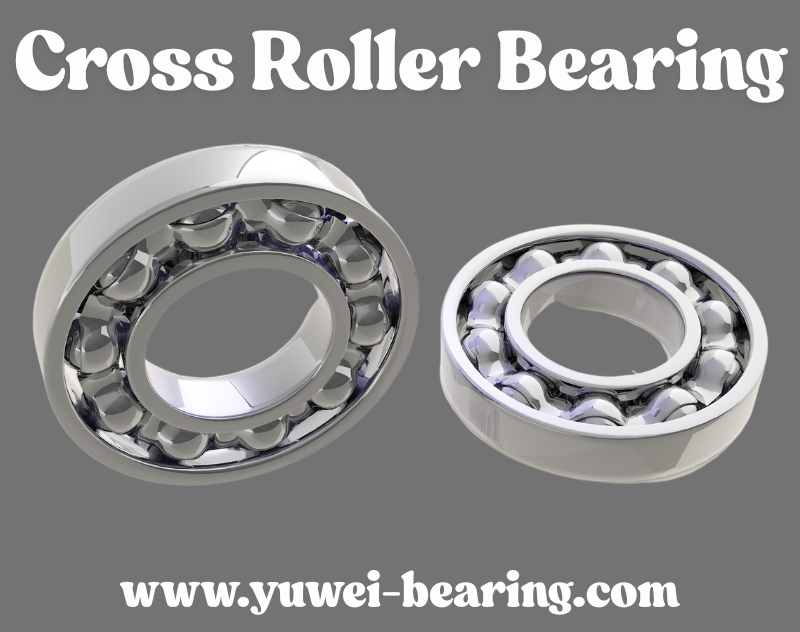Why Cross Roller Bearings Are Revolutionizing Precision Engineering in 2025

In the world of advanced machinery and robotics, precision is everything. Whether it's a high-speed CNC machine, an industrial robot, or a sophisticated medical device, the performance of these systems hinges on one critical component — the bearing. Among the various types available today, the cross roller bearing has emerged as a game-changer, setting new standards in precision, load capacity, and durability.
What Makes Cross Roller Bearings Unique?
Unlike conventional bearings, cross roller bearings are designed with cylindrical rollers arranged at right angles to each other in a crisscross pattern. This unique structure allows the bearing to simultaneously handle radial, axial, and moment loads with extreme rigidity and high rotational accuracy. This is particularly vital in applications where even the slightest movement or misalignment can affect functionality.
The Precision Advantage
One of the strongest selling points of a cross roller bearing is its unmatched precision. Thanks to its internal roller arrangement and tight tolerance levels, it ensures minimal rotational deflection. Engineers in industries like aerospace, semiconductor manufacturing, and robotics rely on cross roller bearings to deliver smooth and precise motion — even under heavy loads or high-speed operations.
For example, in industrial robots used for micro-assembly or laser machining, the bearing's precision directly impacts the system’s performance. Cross roller bearings ensure consistent positioning, which is crucial for processes that demand micron-level accuracy.
High Load Capacity with Compact Design
Traditional bearings often require a combination of two or more bearing units to manage different load directions. In contrast, a single cross roller bearing can do the job, simplifying the design and reducing space requirements. This compactness is highly beneficial in applications with tight space constraints — such as rotary tables, CT scanners, or satellite positioning systems.
Despite their compact size, these bearings boast excellent load-handling capabilities. The line contact of the rollers provides a larger contact surface compared to ball bearings, distributing the load more evenly and enhancing performance under pressure.
Durability and Long Service Life
Cross roller bearings are built for demanding environments. Their construction allows for uniform stress distribution, reducing internal friction and wear. This not only improves operational efficiency but also extends the service life of the equipment. Fewer replacements and less downtime mean significant cost savings in the long run — a compelling advantage for manufacturers and maintenance teams alike.
A Rising Trend in Modern Engineering
As industries shift toward automation and miniaturization, the demand for high-performance, compact mechanical components continues to grow. The cross roller bearing perfectly aligns with this trend. It provides engineers with the flexibility to design smaller, lighter, yet more powerful systems without compromising on reliability or functionality.
Moreover, with rapid advancements in production technologies and materials, the cost of manufacturing cross roller bearings is becoming more competitive. This opens the door for broader adoption across industries that once relied on more conventional alternatives.
Conclusion
The rise of the cross roller bearing is more than just a passing trend — it’s a response to the evolving needs of precision-driven industries. With its ability to handle complex loads, maintain accuracy, save space, and endure challenging conditions, this bearing is reshaping the standards of modern engineering. For businesses seeking performance and precision in one package, cross roller bearings represent a smart, future-proof investment.
Categorii
Citeste mai mult
Nicotine enthusiasts in Dubai are turning to modern, smoke-free alternatives that match their lifestyle. Among these, Velo has quickly risen to the top for its premium quality and convenience. Today, it’s easier than ever to Buy Velo Nicotine Pouches in Dubai | Fast Delivery in UAE and enjoy discreet nicotine satisfaction without any hassle. Why Velo Is Becoming Dubai’s Favorite...

Remote Towers Market Size & Insights As per recent study by MarkNtel Advisors The Global Remote Tower Market size is valued at around USD 0.33 billion in 2024 and is estimated to grow at a CAGR of about 11.5% during the forecast period, i.e., 2025-30. What are the Key DROs in the Remote Towers Market? Rising Airport Infrastructure to Drive the Demand for Remote Tower – The...

The Philippines is a nature lover and adventure seeker paradise. It is home to more than 7,000 islands, lush rainforests, beautiful beaches, and an amazing abundance of wildlife, so it is a place of unforgettable experiences. Assuming you are already in UAE and you want to visit this tropical paradise, the first thing you need to do is to obtain your Philippines visa from UAE. Professional visa...

What Is Digital Marketing? Let’s make it super simple. When you show a product or service on the internet, that’s called digital marketing. It’s like when you see ads on: Google YouTube Facebook Instagram Instead of talking to people one by one, digital marketing lets you talk to many people online. You can do this with your phone or laptop. Why Is Digital Marketing...

The global carbon credit trading platform market is experiencing strong momentum as nations and corporations strive to meet net-zero targets and comply with increasingly stringent environmental regulations. As the world intensifies its focus on climate change mitigation, digital platforms that facilitate the transparent and efficient exchange of carbon credits are gaining prominence in carbon...




